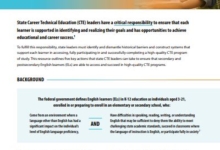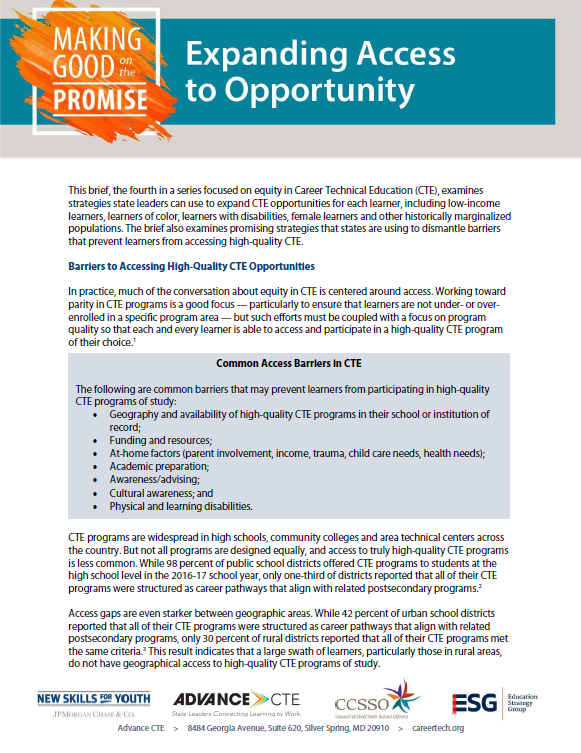Historically, Career Technical Education (CTE)—once called vocational education—was an alternative educational option for learners who were considered non-college bound. As a result, a disproportionate number of low-income learners, learners of color, learners with disabilities, female learners and other historically marginalized populations were “tracked” into terminal vocational programs that denied their full potential and left them with limited opportunity. Today, the quality of CTE has vastly improved, making it a preferred path for many secondary and postsecondary learners. Yet even today, many learners do not have access to high-quality programs of study in their communities. This brief, the fourth in the Making Good on the Promise series, examines strategies state leaders can use to expand CTE opportunities for each learner. Specifically, the brief examines how state leaders can:
- Secure and leverage resources to close CTE opportunity gaps;
- Expand geographic access to CTE Opportunities; and
- Address barriers to entry into CTE programs of study.
To help state leaders accomplish this, the brief examines promising strategies that Tennessee, Rhode Island, Ohio, and South Carolina are using to dismantle barriers that prevent learners from accessing high-quality CTE. The Making Good on the Promise series is made possible through the New Skills for Youth initiative, a partnership of the Council of Chief State School Officers, Advance CTE and Education Strategy Group, generously funded by JPMorgan Chase & Co.






